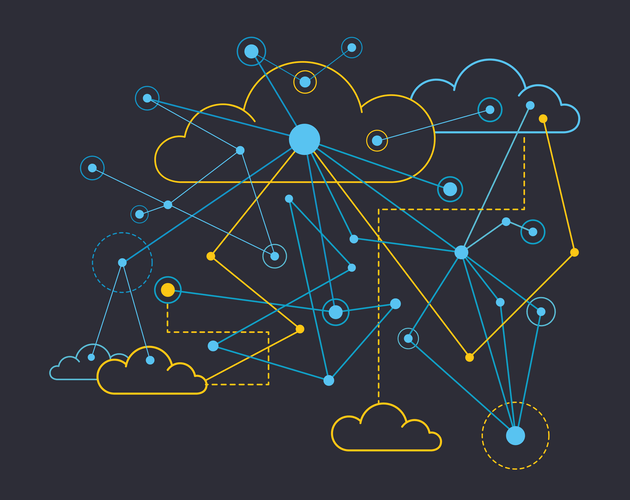CI could be thought-about as the primary stage in producing and delivering code, and CD because the second. CI focuses on getting ready code for release (build/test), whereas CD entails the actual release of code (release/deploy). We’re the world’s main provider of enterprise open source solutions—including Linux, cloud, container, and Kubernetes. We deliver hardened options that make it easier for enterprises to work throughout platforms and environments, from the core datacenter to the community edge. Your organization should be certain that each foundation is actually solid earlier than moving up. Trying to adopt Continuous Deployment without absolutely embracing Continuous Delivery first is a shedding battle.
After every characteristic is merged to the mainline branch, the applying is not only tested for correctness, but it’s also packaged and deployed into a testing surroundings (that ideally matches production). Notice the lack of stick figures (that characterize manual steps) in the earlier illustration. These adjustments are validated by way of the creation of a construct that is subjected to automated tests.
- The reality of contemporary software program growth is that nearly all programmers work with a quantity of tools and environments which are completely different from their organization’s take a look at, development, and production system.
- DevSecOps (development, security, and operations) is an approach to tradition, automation, and platform design that integrates safety as a shared duty throughout the entire IT lifecycle.
- Each stage have to be accomplished efficiently before the subsequent one can begin.
- This embodies the ideas of DevOps, by encouraging an efficient launch course of that remains dependable and successful.
- Continuous integration places a great emphasis on testing automation to check that the appliance is not broken each time new commits are built-in into the main branch.
- This finally allows developers to construct, check and deploy modifications or releases without affecting the reliability of the infrastructure.
Navisite is a trusted IT providers partner for mid-market and smaller enterprise corporations. We help our customers maximize business value and accelerate digital transformation with a complete portfolio of enterprise utility, knowledge management, security and managed cloud providers. CI could be viewed as a first step and CD as the second for creating and deploying code.
In Cloud Turf Wars, Google Cloud Platform Has Become A High Contender With A Strong Enterprise Focus
To that finish, the aim of continuous delivery is to have a codebase that’s always prepared for deployment to a manufacturing environment, and make positive that it takes minimal effort to deploy new code. In modern application improvement, the aim is to have a number of builders working simultaneously on completely different features of the identical app. However, if a corporation is about up to merge all branching supply code collectively on one day (known as “merge day”), the resulting work can be tedious, guide, and time-intensive. That’s because when a developer working in isolation makes a change to an utility, there’s a chance it’ll battle with totally different changes being simultaneously made by different developers. This means testing every thing from courses and function to the completely different modules that comprise the whole app.
Programmers are working in a one-to-two-week dash, somewhat than a months-long improvement of an replace. So, updates can come to applications each few weeks, rather than one large annual release cycle. Using automated software, the code will deploy to all servers, pause them, push the code out, make https://www.globalcloudteam.com/ sure it landed appropriately, then flip them back on—all in a seamless means for customers. To put it merely steady integration is part of both steady delivery and continuous deployment.
Support For Server Merchandise Ends February 15, 2024
CD ensures there is a streamlined and automatic method to push code to these totally different and disparate systems without unleashing chaos. While it is a coding philosophy, a set of practices additionally underpins the Continuous Integration pipeline to make it possible. A core follow of CI is using a succesful version management system that easily permits small and frequent modifications of code to be checked into a shared repository while religiously tracking minute changes to the codebase.
However, when you actually wish to get the benefits of continuous delivery, you need to deploy to production as early as potential to just be sure you release small batches which are easy to troubleshoot in case of an issue. The staff can obtain continuous deployment by relying on infrastructure that automates completely different testing steps. Once every integration meets this launch standards, the appliance is updated with a new code. Once CD is in place, releases turn into trivial as they can be carried out with a push of a button. Everybody (not simply the project manager) has visibility on the current release candidate.

If automated testing discovers a battle between new and current code, CI makes it simpler to repair these bugs rapidly and infrequently. CI and CD stand for steady integration and steady delivery/continuous deployment. In quite simple terms, CI is a modern software program development follow in which incremental code modifications are made frequently and reliably. Automated build-and-test steps triggered by CI ensure that code changes being merged into the repository are dependable. The code is then delivered quickly and seamlessly as part of the CD course of.
Advantages Of Steady Deployment
Synopsys’ complete set of application security testing (AST) instruments assist you to take a look at for and remediate security vulnerabilities in your CI/CD pipeline. In brief, CI is a set of practices carried out as developers are writing code, and CD is a set of practices carried out after the code is accomplished. As agile developers became simpler at writing and pushing code, having a strict distinction between QA and Dev groups proved inefficient. CD can even imply Continuous Deployment – a practice during which all modifications are routinely deployed into production. Unlike Continuous Delivery, there is no ultimate guide approval before releasing into production. Continuous Deployment isn’t just about speed; it’s a risk-reducing technique.
A quick learn of this text ought to assist you to unravel the mystery by exploring the basics and the distinction between CI and CD throughout the context of DevOps. As businesses attempt for innovation, understanding the unique roles these elements play becomes important in reaching transformative outcomes via automated growth and deployment of software program. It is essential as a end result of it allows larger transparency and foresight within the software growth and supply course of. They all work for SoftwareCo Inc. building the SuperBigProject application. Users can centralize the storage process of building artifacts via a consolidated artifact repository such as JFrog or Yarn.
If the complexity of these definitions is anything to go by, it’s clear that the principle problem for groups hoping to introduce CI/CD is upskilling. If you wish to be taught extra about CI/CD and how to use it in your Salesforce releases, take a glance at Gearset’s free e-book CI/CD for Salesforce. It’ll get you over the first hurdle of understanding CI/CD and assist you to lay the foundations for a profitable development process. And of course you can learn extra about all issues Salesforce DevOps, including CI/CD, on DevOps Launchpad. Continuous integration (CI) and continuous supply (CD) are subsets within the bigger DevOps umbrella—put merely, these are the 2 core processes that allow the DevOps methodology.
Moving safety testing to earlier in the life cycle is considered one of the most important steps to achieving this goal. This is especially true for DevSecOps organizations that depend on automated security testing to keep up with the velocity of supply. The key reason you won’t often discover a clear definition of ‘CI/CD’ is because each time period could be outlined in different ways. ‘CD’ can be used to discuss with both ‘continuous delivery’ or ‘continuous deployment’, and despite the fact that ‘CI’ all the time refers to ‘continuous integration’, this apply varies widely between completely different teams. This is why it’s so essential for groups weighing up the benefits of CI/CD pipelines to completely perceive what’s meant by each time period, to permit them to establish the right automation for their staff. In DevOps, extra automation isn’t always better — the final word objective is to streamline the pipeline via automated testing and deployment without sacrificing product high quality.
An instance of DevOps could be quickly and efficiently deploying code on a cloud platform. It’s an ongoing process—rather than having one giant replace each few months or years, smaller, incremental updates are pushed out on a continuous foundation. This ultimately allows developers to build, test and deploy modifications or releases with out affecting the reliability of the infrastructure. CI improves collaboration throughout the development process ci/cd monitoring, while CD uses automation to streamline testing, staging, and validation so code is deployable on the push of a button. Throughout the process, high quality gates evaluate commits against important standards. Continuous deployment is an excellent approach to accelerate the suggestions loop together with your customers and take pressure off the staff as there is not a “release day” anymore.
This growth strategy builds upon Continuous Delivery and primarily completely removes all human intervention. Any release candidate that is discovered to be ready (and passes all high quality and testing gates) is straight away pushed to production. 3) The test stage covers automated testing and validates software behavior with an purpose to stop bugs from reaching customers.
Growing demand for creating software with superior options could be met with Agile Development. Essentially, it allows project managers to track how lengthy it takes to recuperate from a failure within the system. Under Continuous Integration, groups don’t want to worry about packaging huge commits and releasing profound structural adjustments. Instead, they’ll interact in smaller, iterative adjustments that are much less prone to be disruptive.
What’s Continuous Deployment?
A human decides if a launch candidate will be also pushed to manufacturing. Release candidates that don’t reach production are still saved as an artifact if they must be recalled sooner or later. While the cloud can actually help with all these requirements, there’s a certain level of discipline required in the software team (both builders and operations) in order to actually embrace Continuous Delivery. Now that we now have seen what “Integration” means, it is rather straightforward to grasp what “Continuous Integration” entails. As the adage goes, “if one thing is painful, do it extra often.” Continuous Integration is basically the repetition of the mixing step with a excessive frequency to alleviate its pain. And the most obvious approach to do it frequently is to combine after EVERY function merge (instead of ready before an official release is announced).

Containerization tools similar to Docker and Vagrant help scale up and down situations softly, in addition to ensure consistency throughout improvement, staging, testing, and manufacturing. 2) The continuous integration stage contains the development of code for model spanking new functionality being constructed and integrated with the prevailing code. Once all of the commits are constructed, problems can be detected early on this stage.
This makes it much easier to repeatedly obtain and incorporate consumer feedback. Taken together, all of these linked CI/CD practices make deployment of an software much less dangerous, whereby it’s simpler to release changes to apps in small pieces, rather than suddenly. However, as a end result of there isn’t any manual gate on the stage of the pipeline earlier than production, steady deployment relies heavily on well-designed test automation. This signifies that steady deployment can require a lot of upfront investment, since automated exams will have to be written to accommodate quite so much of testing and release stages within the CI/CD pipeline. Continuous supply automates the discharge of validated code to a repository following the automation of builds and unit and integration testing in CI. It’s a solution to the issue of poor visibility and communication between dev and enterprise teams.

